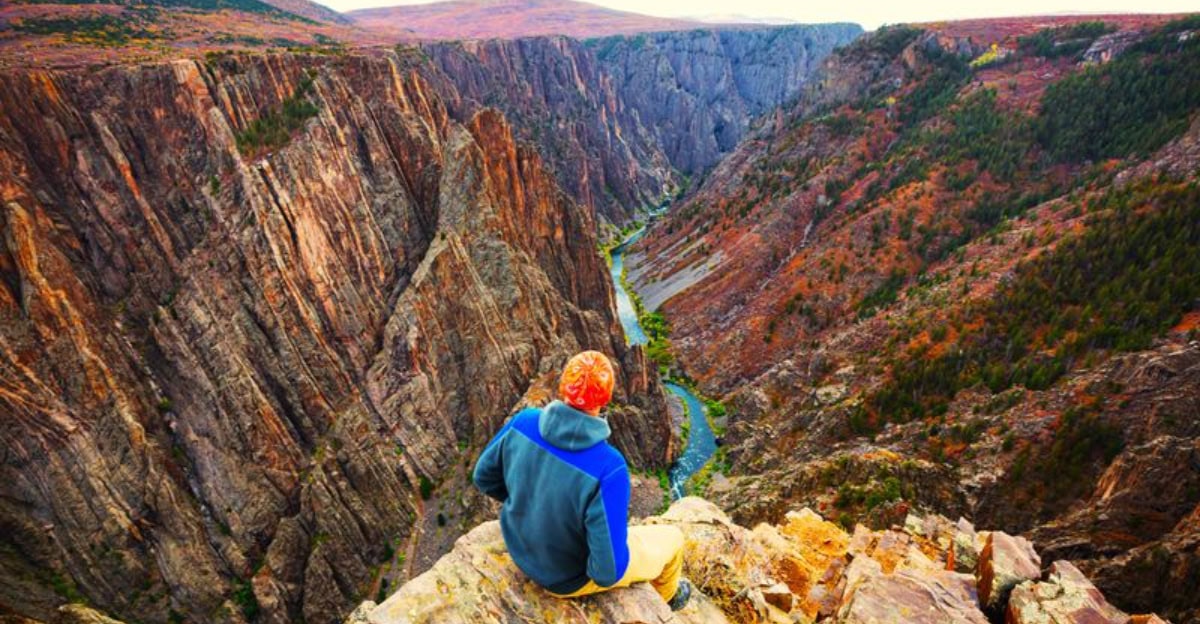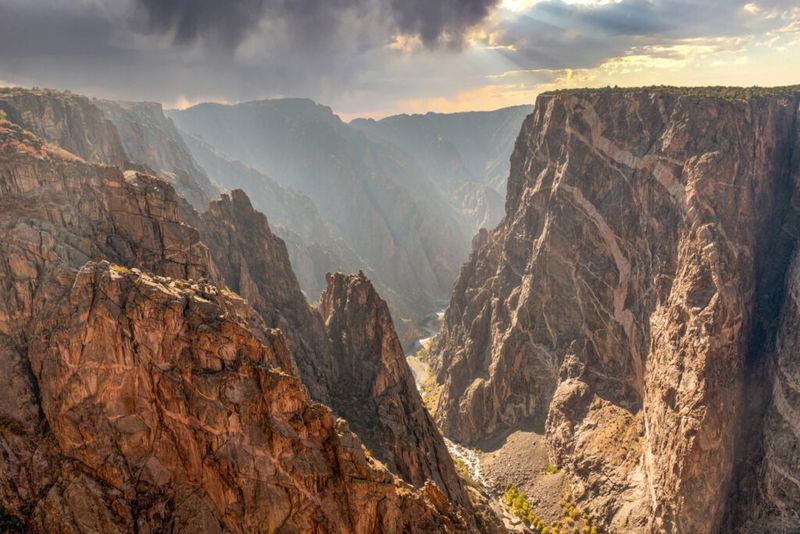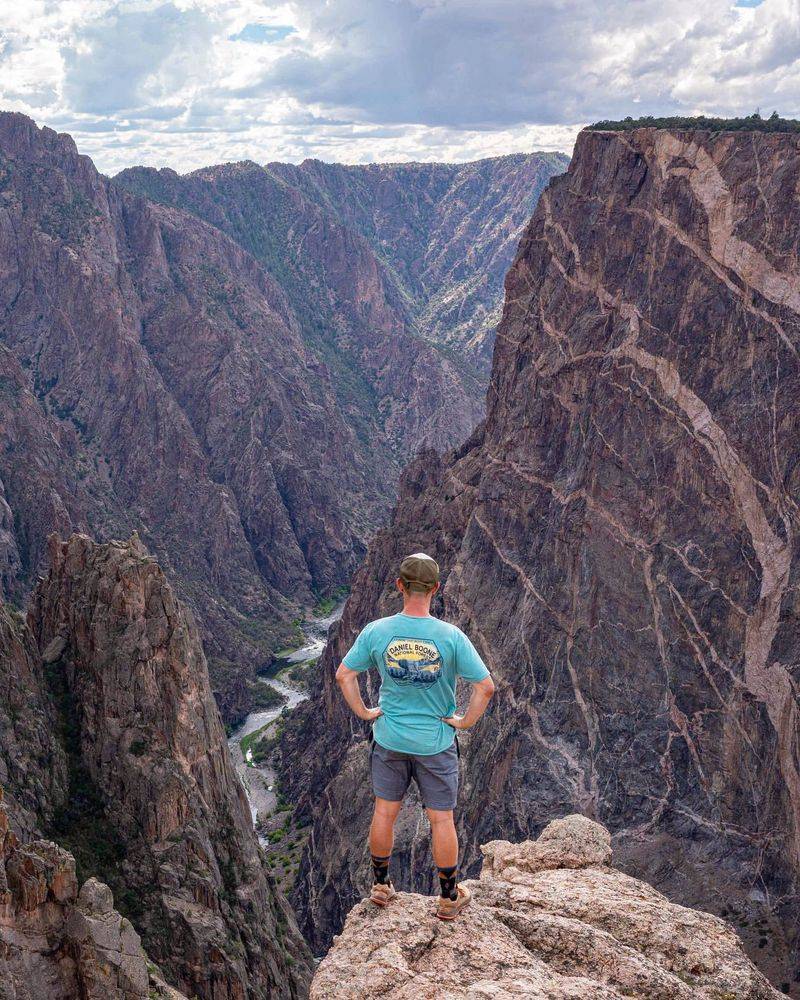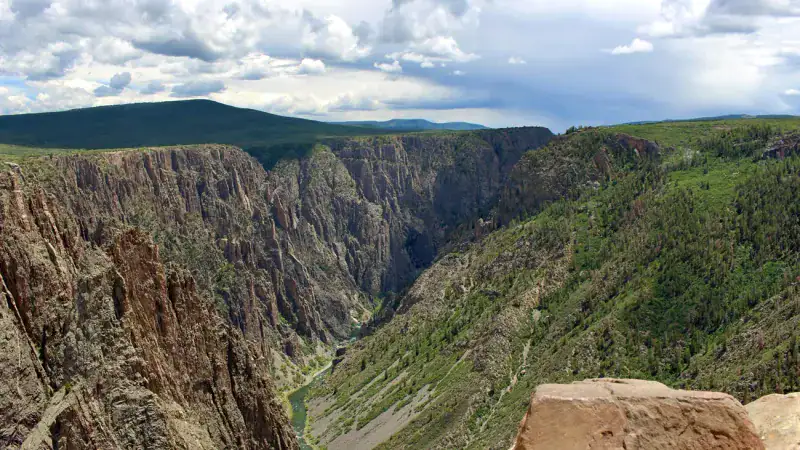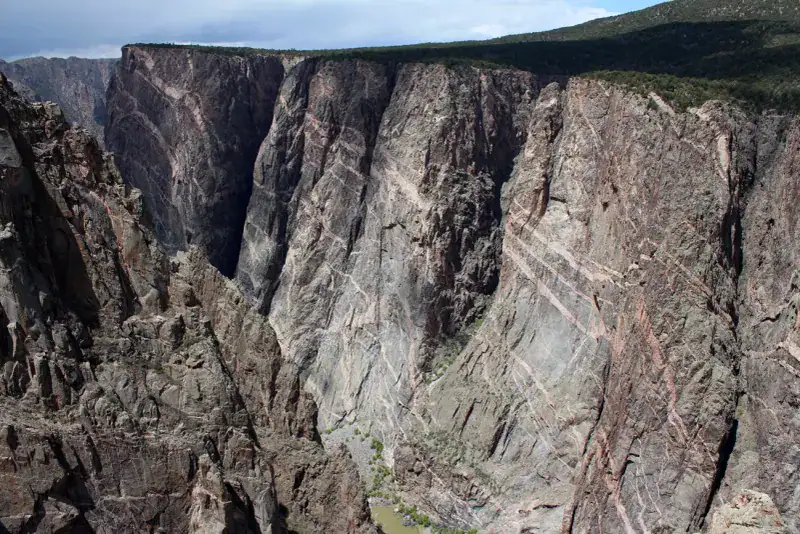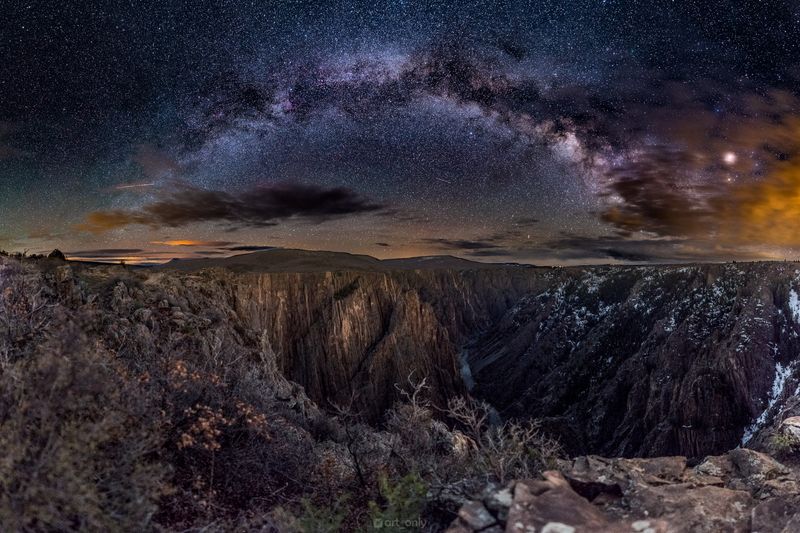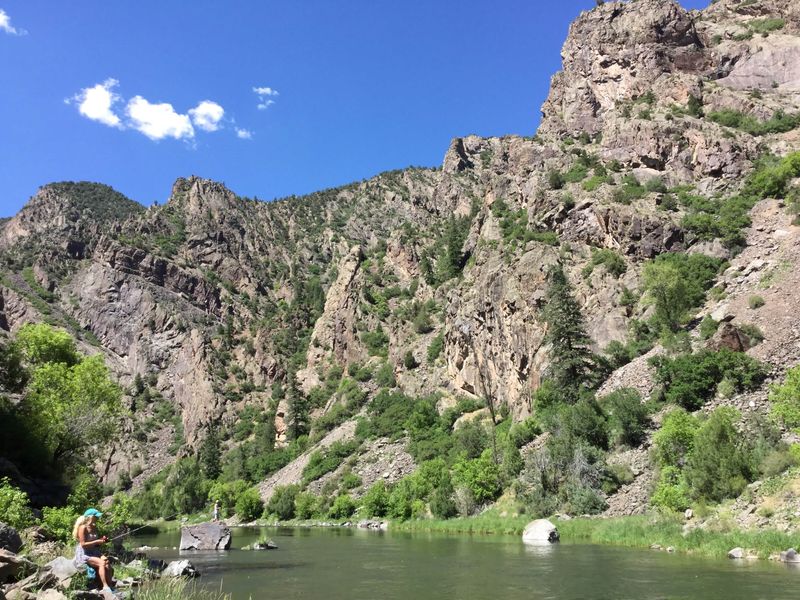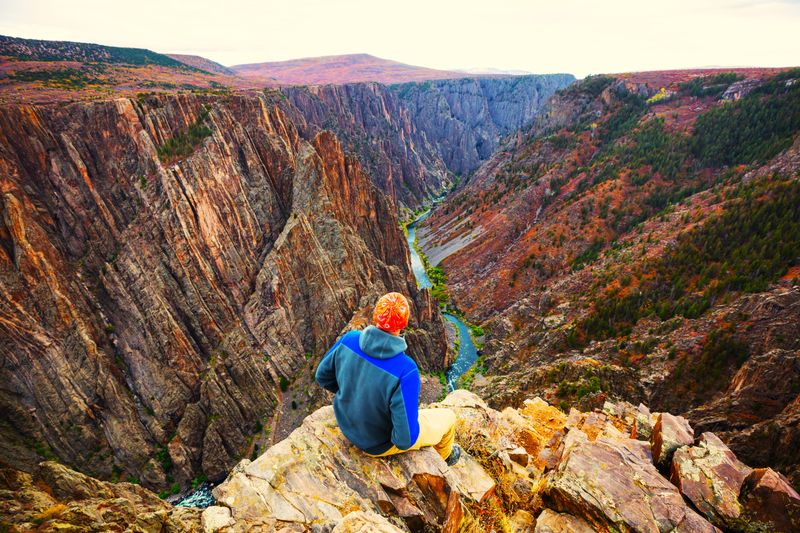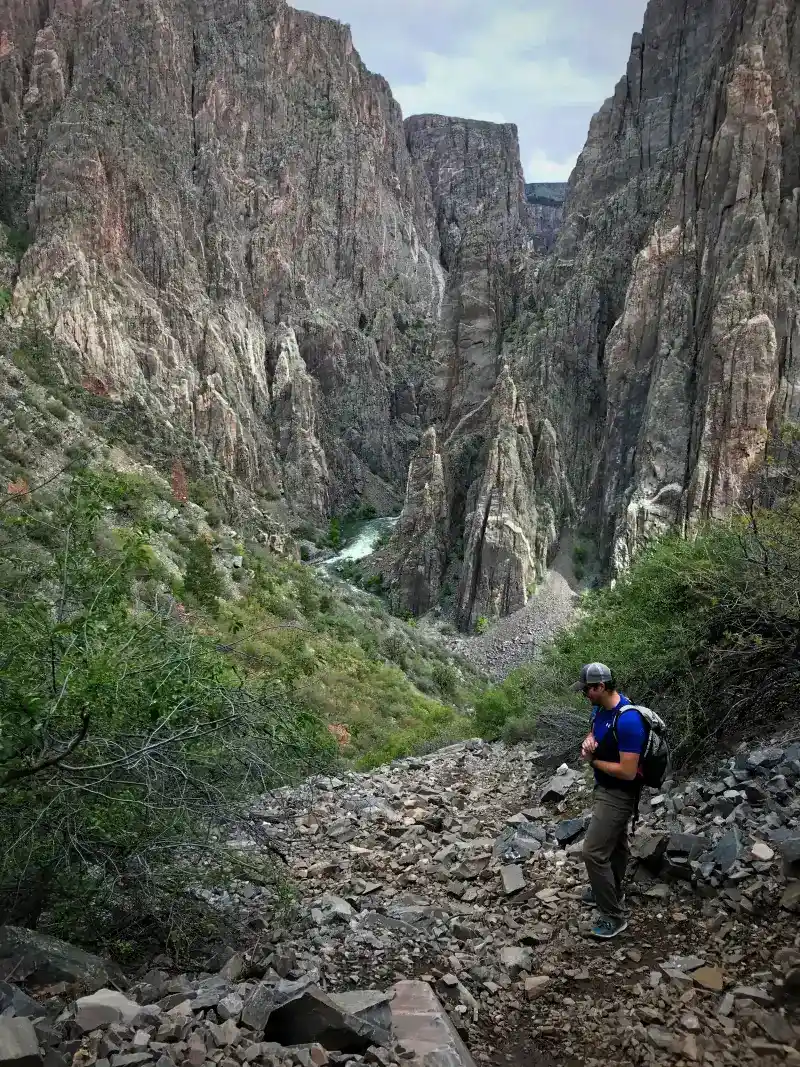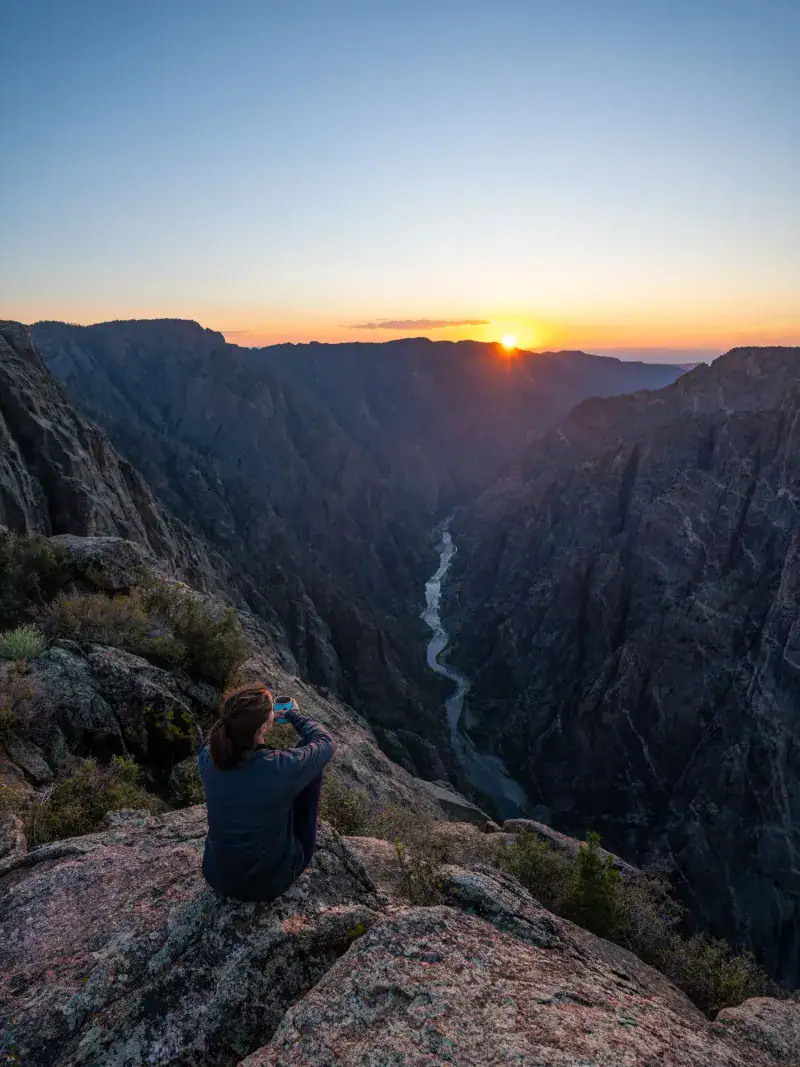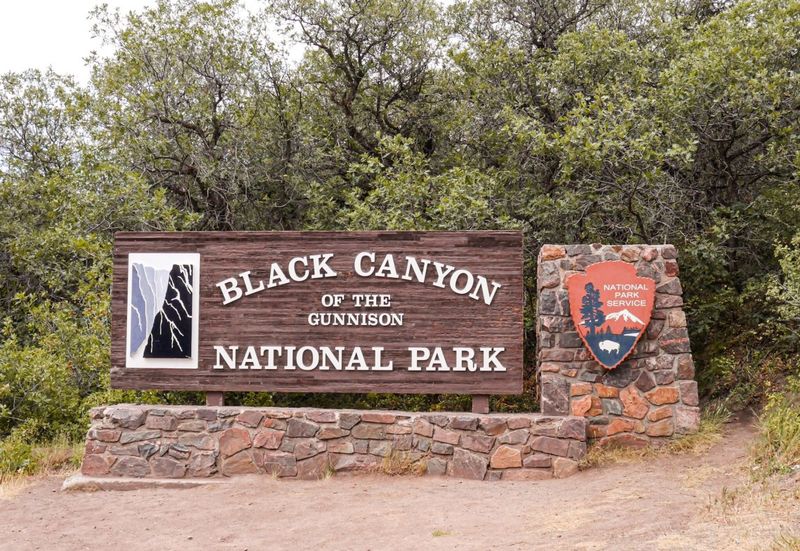Colorado hides a dramatic secret that even many locals don’t know about. While millions flock to Rocky Mountain National Park each year, Black Canyon of the Gunnison sits quietly in the western part of the state, offering some of the most breathtaking views you’ll ever see. This incredible place features towering cliffs, deep canyons, and star-filled skies that will leave you speechless. Ready to discover Colorado’s best-kept natural treasure?
1. Colorado’s Most Overlooked National Park
Black Canyon of the Gunnison welcomes fewer visitors than any other Colorado national park. While Rocky Mountain National Park sees over 4 million people yearly, this hidden gem recorded only 357,000 visits in 2023.
That means you can actually enjoy nature without fighting crowds for photo spots. Great Sand Dunes and Mesa Verde both get more tourists, making this canyon feel like your own private discovery.
The low visitor numbers create an peaceful atmosphere where you can hear birds singing and wind whistling through the rocks instead of constant chatter from tour groups.
2. Standing Before Colorado’s Tallest Cliff Face
The Painted Wall rises an incredible 2,250 feet straight up from the Gunnison River below. This massive rock face holds the record as Colorado’s tallest cliff, creating a view that makes people gasp out loud.
Getting there requires just a 200-yard walk from the parking area to the overlook. The short distance makes this spectacular sight accessible to almost everyone, including families with young kids.
Pink and white streaks run through the dark rock like nature’s own artwork. These colorful lines formed millions of years ago when hot rock squeezed into cracks, creating patterns that look almost painted on.
3. A Canyon So Deep Sunlight Barely Reaches the Bottom
The canyon plunges 2,722 feet deep at its maximum point near Warner Point. At a spot called The Narrows, the river squeezes through a space only 40 feet wide between towering walls.
This narrow, deep shape blocks sunlight from reaching the water for most of the day. The dark shadows give the canyon its mysterious black appearance and spooky name.
Standing at the rim and looking down feels like peering into another world. The river looks tiny from up there, even though it’s actually a powerful force that carved this incredible canyon over millions of years.
4. Twelve Amazing Views Along One Easy Drive
South Rim Drive stretches seven paved miles and connects twelve different overlooks. Each stop offers a unique angle of the canyon, from wide panoramic views to close-up looks at the rock formations.
Park rangers suggest four must-see spots if you’re short on time: Gunnison Point, Chasm View, Painted Wall, and Sunset View. These locations provide the most dramatic and Instagram-worthy scenes.
The drive takes about two hours if you stop at every overlook for photos and exploring. Families love this option because it requires minimal walking while delivering maximum wow factor for kids and adults alike.
5. Finding Peace and Quiet at the North Rim
The North Rim offers a completely different experience from its busier southern counterpart. Fewer people make the journey here because the final miles involve unpaved roads and more primitive facilities.
This extra effort rewards visitors with quieter overlooks and access to inner-canyon hiking routes. You’ll often have entire viewpoints to yourself, especially during weekdays.
Getting there requires driving through the small town of Crawford, then following rougher roads that some rental car companies don’t allow. But if your vehicle can handle it, you’ll discover some of the most peaceful spots in the entire park system.
6. Stargazing Under Some of America’s Darkest Skies
Black Canyon earned International Dark Sky Park status in 2015, meaning it has exceptionally dark nighttime conditions. Light pollution from cities doesn’t reach here, creating perfect conditions for seeing stars, planets, and the Milky Way.
Rangers lead special astronomy programs during summer months when the Milky Way appears brightest overhead. These free programs include telescope viewing and constellation tours that fascinate both kids and adults.
Bring a blanket and prepare to be amazed by how many stars you can actually see. The night sky here looks nothing like what most people see from their backyards in towns and cities.
7. Three Campgrounds with Completely Different Personalities
South Rim Campground sits near the visitor center and offers larger sites, some with electrical hookups for RVs. This option works best for families wanting convenient access to facilities and programs.
North Rim Campground features only thirteen first-come, first-served sites tucked under pinyon and juniper trees. The intimate setting appeals to people seeking a more wilderness-like camping experience.
East Portal Campground sits at the canyon bottom beside the Gunnison River, but getting there requires navigating a steep 16% grade road with vehicle length restrictions. This unique location offers riverside camping found nowhere else in the park.
8. Planning Your Visit Around Colorado Weather
The park stays open all year, but access changes dramatically with seasons. South Rim Drive welcomes vehicles from late April through mid-November, then becomes a cross-country skiing and snowshoeing route during winter months.
North Rim Road and East Portal Road close completely when snow arrives, typically lasting until spring thaw. Always check current conditions and alerts before making the drive from your hotel or campsite.
Summer brings the most reliable access and warmest weather, but also the highest visitor numbers. Spring and fall offer cooler temperatures, fewer crowds, and stunning seasonal colors that make photography even more spectacular than usual.
9. Inner-canyon scrambles are permit-only (and very serious)
Adventure seekers often underestimate the technical challenges of descending into Black Canyon’s depths. Park rangers require special permits for inner-canyon routes because these scrambles involve serious rock climbing skills and emergency preparedness.
Routes like the Gunnison Route and SOB Draw demand experience with loose rock, steep terrain, and potential rockfall hazards. Many climbers find themselves in trouble when they realize the ascent requires twice the energy of going down.
Rangers conduct safety briefings before issuing permits, emphasizing proper gear, weather awareness, and emergency communication plans for this unforgiving environment.
10. What to see on your first visit
First-time visitors should prioritize the South Rim Drive for the most accessible and spectacular viewpoints. Sunset View and Chasm View offer breathtaking perspectives of the canyon’s incredible depth and narrow width.
Warner Point Trail provides an easy walk to panoramic views, while Rim Rock Trail gives families a gentle introduction to the park’s geology. Cedar Point offers perfect sunrise photography opportunities with dramatic lighting on the opposite canyon walls.
Visitor Center exhibits explain how the Gunnison River carved this remarkable canyon over millions of years through incredibly hard Precambrian rock.
11. Getting there is easy from Montrose
Montrose serves as the perfect basecamp for Black Canyon adventures, located just 15 miles from the park’s main entrance. Highway 347 provides a scenic drive through Colorado farmland before reaching the park boundaries.
Local gas stations and grocery stores in Montrose offer last-minute supplies, while several restaurants provide hearty meals after long hiking days. The drive takes about 20 minutes, making day trips completely feasible from town.
Montrose Regional Airport connects visitors from major cities, while the town’s hotels and campgrounds provide comfortable accommodations for extended park explorations.
